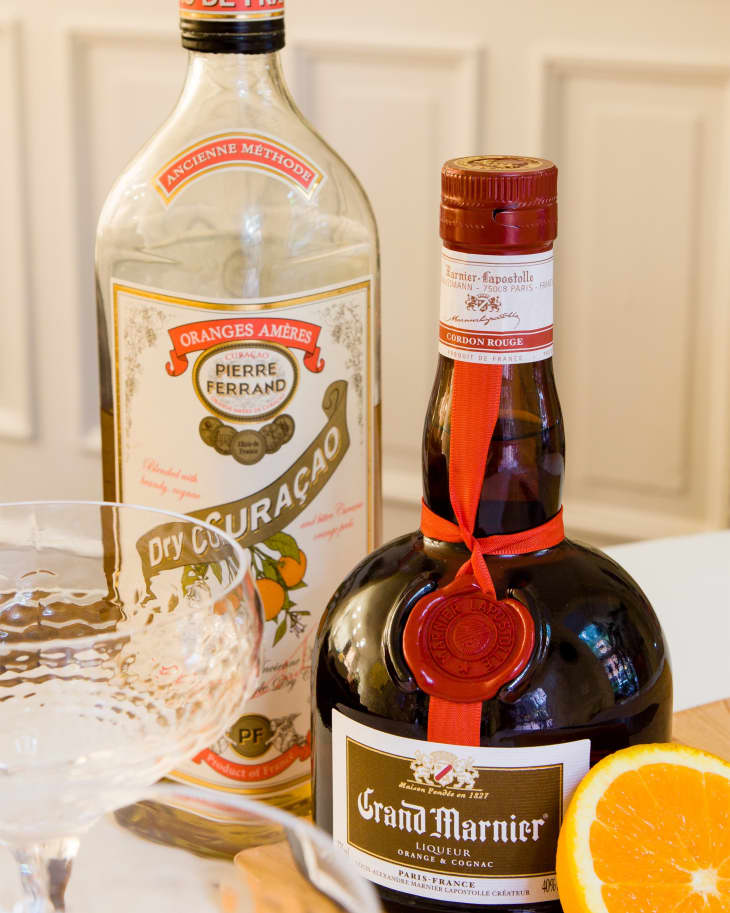Curaçao, Triple Sec, and In Between: An Orange Liqueur Crib Sheet
With July’s arrival, The 9-Bottle Bar crosses its halfway point, shifting focus from bottle number four in our trim, no-nonsense brigade to bottle number five. Discussed to date: rye whiskey, London dry gin, sweet vermouth, and light rum.
Now we turn our attention to orange liqueur, an often-reached-for mixing ingredient practically since the dawn of the cocktail.
What Is Orange Liqueur?
Orange liqueur, which made an appearance in last week’s 9-Bottle Bar recipe, for the 1930s-vintage XYZ cocktail, is at once very easy and very tricky to explain. On the one hand, it is what it sounds like: an orange-flavored liqueur.
Typically, liqueurs are classified as spirits that have been sweetened, and orange liqueurs fit that description. Today’s orange liqueurs feature a wide variety of spirit bases, from grape-based French cognac to rum to plain old neutral grain spirits (essentially vodka).
On the other hand, a few of the terms associated with orange liqueur complicate our understanding of this spirits category. You may be wondering, What’s curaçao? And what distinguishes curaçao from triple sec, or are they the same thing? Historical information on the subject isn’t plentiful, and so not much of a guide. But there are a few important facts we do know.
What’s the Difference Between Curaçao & Triple Sec?
While both orange curaçao and triple sec are types of orange liqueurs, the two terms are not exactly interchangeable — at least by their generally accepted (yet loose and unregulated) definitions.
Curaçao gets its name from the island off the Venezuelan coast, where the Spanish cultivated Valencia oranges following their arrival from Europe. The island would later become a Dutch property. The fruit evidently wasn’t great eating, due to the dry climate, and over time the island’s increasingly rugged oranges came to be known by a different name: Laraha. The bitter, aromatic peels of these wild-grown oranges, when dried out, would ultimately prove a popular flavoring for spirits back in the Old World. This is how curaçao was likely born. You might expect that products labeled “curaçao” would have to include oranges from that island, but no such rule exists.
Triple sec probably originated in France as an offshoot style of orange curaçao. Sec means “dry” in French, and, while the meaning of the “triple” in the name remains in dispute, triple secs are known to be drier (i.e., less sweet) in style than curaçaos (leading some to believe that “triple” is meant to suggest three times as dry).
Cointreau, among the best-known brands of orange liqueur, is a triple sec in style, even though it’s not labeled as such. Grand Marnier, the other heavyweight in the category, is in the slightly sweeter curaçao camp.
Numerous other brands fill out the current market, as well as the flavor spectrum, for orange liqueur. Products range from spicy and bitter and nicely restrained in their sweetness, to cloying and syrupy and hardly bitter at all. And I suppose from that comparison you can guess where my preferences lie.
